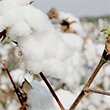Levi’s was established in 1853 by Levi Strauss. Headquartered in San Francisco, CA, the brand designs and sells bottoms, tops, and outerwear. Their products are manufactured in Bangladesh, China, India, Mexico, and Pakistan.
In our pursuit of knowing how sustainable Levi’s is, we researched their current practices and how much they are impacting the environment. Areas we explored include raw material use, brand communications, long-term use, energy efficiency, and waste generation.
The bulk of their product selection is made of cotton, which is known to have very high water and energy requirements. In addition, the brand also uses polyester, organic cotton, nylon, and spandex in making their clothes. This extensive use of polluting and water-intensive fabrics reveals that they are lacking in effort when it comes to consciously sourcing their raw materials.
Levi’s values sustainability by actively communicating their green efforts and goals while informing their customers about the most pressing environmental issues. They have marketing campaigns that inspire the public to take steps in improving their global impact. Moreover, they enhance transparency by sharing details of the environmental life-cycle assessment results of their products.
To promote long-term use of their products, they establish initiatives that help consumers reuse their old clothes or repair any damaged articles. That said, they are currently not organizing any garment collecting program that might prompt customers to raise their efforts in reducing their personal waste footprint.
One of the most impressive measures that they are employing in their operations is their use of renewable energy and energy-efficient technologies. What’s more, the brand also hopes to extend this shift as far as the consumer use stage by providing their customers with eco-conscious care instructions.
Each package that we transport quickly causes some adverse effects on our environment. When distributing their products, the brand provides their customers with the choice to go for the standard shipping option—a slower and less harmful way to move goods. However, it seems that they haven’t taken this initiative further by offering incentives to customers who opt out of express shipping methods such as overnight or same-day delivery.
Levi’s packages their products free of any plastic material. Instead, they are using mainly paper—a material that is biodegradable, reusable, and recyclable. To further minimize any waste that comes from their products, they use the appropriate size box and fewest possible components to pack their orders in.
After researching how sustainable Levi’s is, we determined that, based on their computed score of 3.6 or a rating of Late Bloomer, they are hardly sustainable. This is a very low rating and indicates that they are performing poorly with respect to their environmental efforts.































